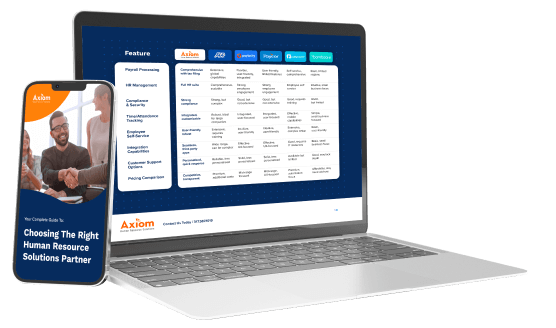
Time theft doesn’t always look like fraud—and that’s the challenge.
It often hides in plain sight: a late clock-in that goes unnoticed, a skipped break logged as time worked, or a manager who signs off on timesheets without scrutiny. Over time, these gaps compound into lost payroll dollars, compliance risk, and fairness concerns.
What makes time theft so hard to stop? It blends into your operations, buried in outdated systems and under-enforced policies. This article outlines the hidden patterns, the business cost, and how HR teams can address the issue without resorting to surveillance or micromanagement.
What Does Time Theft Actually Look Like?
Time theft is when employees are paid for time not actually worked. It’s rarely malicious. In most cases, it’s unintentional, stemming from unclear expectations, weak oversight, or system limitations.
It includes:
- Extended breaks not reflected in time records
- Clocking in before starting work or lingering after tasks are done
- Manual edits that consistently round in the employee’s favor
- Buddy punching or shared logins
Rather than being an integrity issue, time theft is often a structural failure in tracking and enforcement.
Common Patterns Hidden in Your Attendance Data
Without the right tools, these red flags are easy to miss. Here’s how time theft typically appears in time and attendance reports:
- Rounding biases: Frequent clock-ins/outs that round to neat increments like :00 or :05
- Missing punches: Gaps in break times or inconsistent lunch periods
- Duplicate patterns: Several employees with near-identical punch times
- Out-of-sync approvals: Manager approvals that don’t match observed or reported behavior
- Inactivity mismatches: Logged hours without corresponding task or production output
These data anomalies are difficult to interpret without automation—and almost impossible to address at scale manually.
The True Cost of Time Theft
The financial hit from time theft may seem small at first—just a few minutes per employee, per shift. But across departments and pay periods, the losses stack up quickly.
Beyond dollars, the impact includes:
- Compliance risk: Errors in wage and hour reporting can trigger audits or penalties
- Trust breakdowns: When employees perceive a lack of fairness, engagement suffers
- Cultural erosion: Tolerating inaccuracies sends a message that accountability is optional
- Manager frustration: Supervisors often lack the data or support to reinforce time policies
Time theft isn’t just a payroll issue—it’s an organizational health indicator.
Why Time and Attendance Systems Alone Aren’t Enough
Many businesses have a timekeeping platform in place. Yet they still struggle with silent time theft.
The problem isn’t software—it’s configuration and accountability.
- Most out-of-the-box systems:
- Lack policy-based customization
- Don’t notify when anomalies occur
- Require HR to hunt for insights manually
- Rely on manager follow-through that’s inconsistent at best
That’s why implementation matters as much as the tool itself. Axiom configures UKG Ready to reflect real-world policies, automates approvals, and flags unusual patterns before they escalate.
How HR Can Start Fixing Time Theft Now
Addressing time theft doesn’t mean becoming authoritarian. It means creating clarity, using the right tools, and reinforcing expectations.
Here’s how
- Analyze your attendance data – Use your reports to compare patterns by team, department, or location. Spot trends early.
- Revisit and reinforce time policies – Document them clearly, share them with staff, and train managers on consistent enforcement.
- Hold managers accountable – Provide tools and data so supervisors can approve time with confidence—not guesswork.
- Set up automation alerts – Use technology to notify you of early punches, long breaks, or missing data.
- Frame accuracy as fairness – Explain that getting time right isn’t about distrust—it’s about consistency, equity, and professionalism.
Combat Time Theft with Axiom’s Configured UKG Ready Tools
Our team doesn’t just install software—we tailor it to your organization’s needs.
With UKG Ready + Axiom, you get:
- Time tracking tools configured to match your policies
- Audit trails and reports that surface issues automatically
- Proactive support to adjust your system as your team grows
- Training for managers and admins to maintain consistency
Time theft can’t be prevented with software alone. It requires strategy, visibility, and reinforcement.
Let’s talk about your time and attendance goals.
FAQ: Time Theft
- What is time theft?
Time theft is when employees receive pay for time they didn’t actually work, intentionally or unintentionally. - How common is time theft in the workplace?
It’s more common than most leaders think, especially in organizations without automated tracking or clear enforcement policies. - Can time theft be accidental?
Yes. Most time theft happens due to confusion, lack of clarity, or system limitations—not malicious intent. - How do I spot time theft in my team?
Look for consistent rounding, unapproved overtime, repeated missing punches, and discrepancies between hours logged and work output. - What’s the best way to prevent time theft?
Use policy-aligned software with built-in alerts, audit your data regularly, train managers, and frame accuracy as a benefit to all. - Why doesn’t software alone solve time theft?
Without proper configuration, oversight, and enforcement, timekeeping platforms can still miss the signals. Customization and strategy are key. - How does Axiom help reduce time theft?
We configure UKG Ready to fit your policies, train your people, and provide ongoing support to make time tracking more accurate and sustainable.


